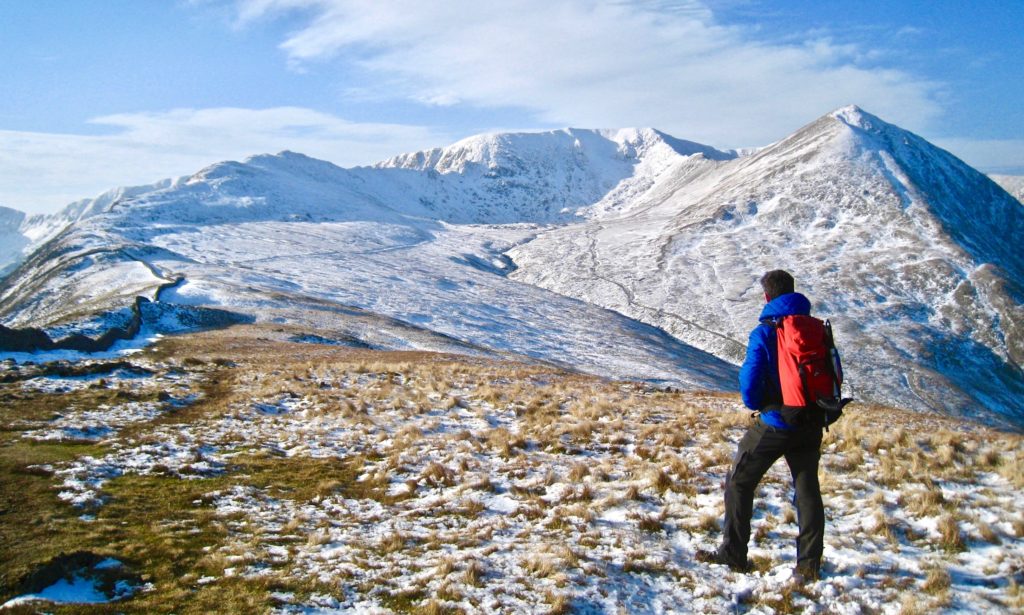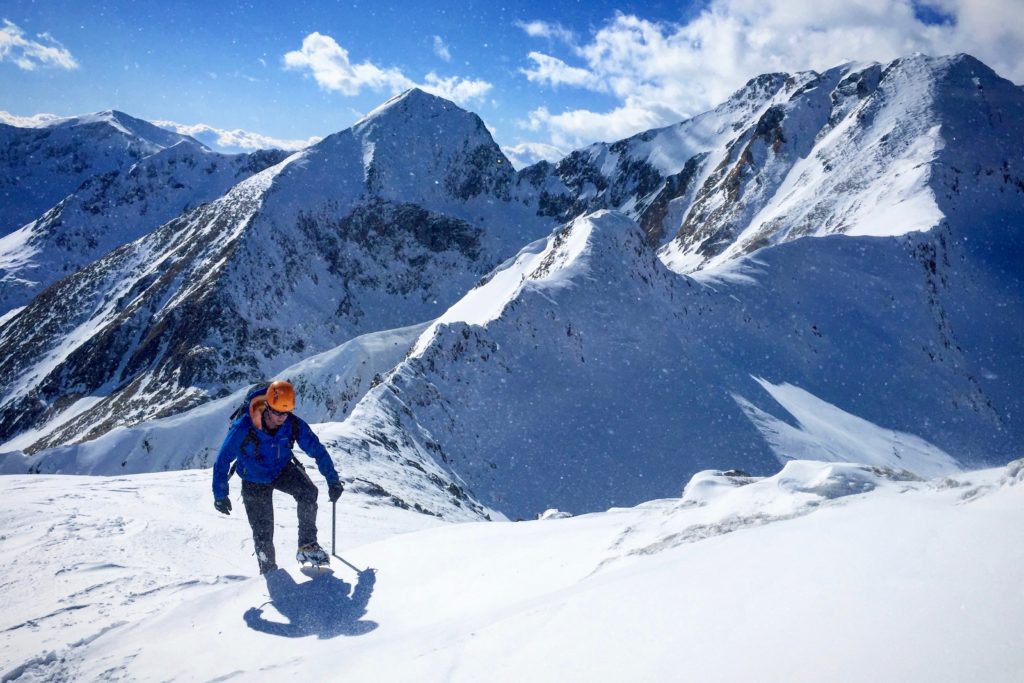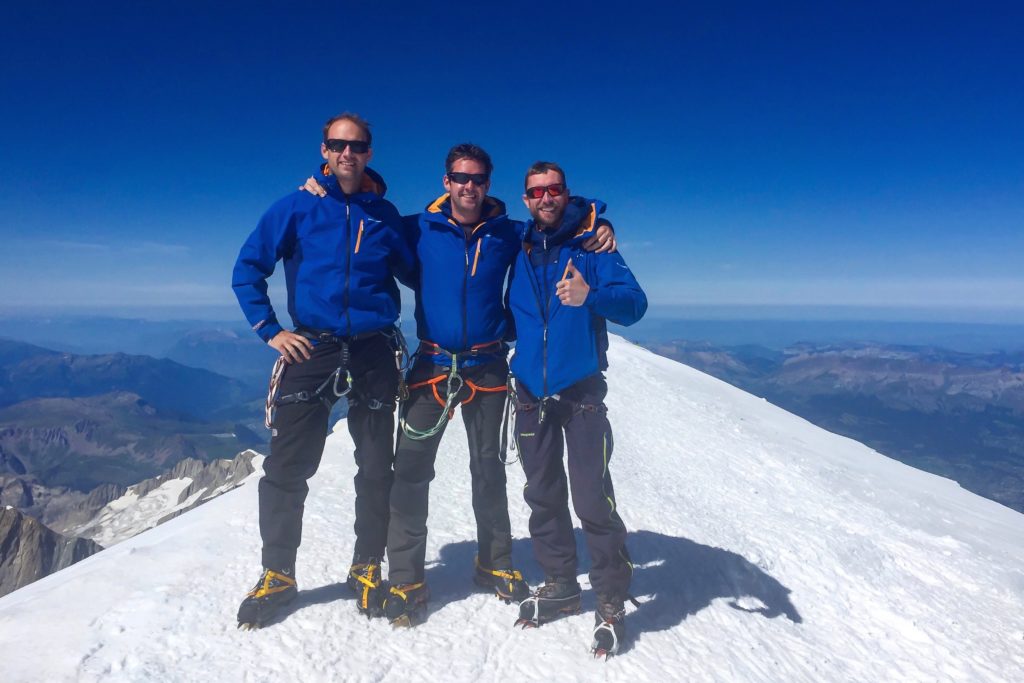The days are getting shorter and temperatures starting to fall. These shouldn’t be reasons to hang up your hiking boots and turn up the thermostat a notch until Spring arrives! In fact, winter brings with it a whole host of new rewards just waiting to be discovered. We talk to Craghoppers Ambassador and Mountaineer, David Love, about how to get out on your first winter walk.
It’s fair to say Dave knows a thing or two about icy adventures. Earlier this year he made a solo winter crossing of the Transylvanian Alps wearing our Discovery Adventures range; a journey that involved permeant sub-zero temperatures, several nights in an emergency snow hole and a very close encounter with a hungry mountain bear! He’s just returned from leading an expedition to the summit of Mt Blanc and wants to help more people get in the hills this winter. Here are David’s top tips for a successful wintry walk…

First thing’s first, winter walking in the hills isn’t something to be nervous about just because you’re a first timer. And, even if you’re not, you should have confidence in your abilities to tackle slightly more challenging winter walking routes this season. I promise, you really don’t need to be kitted out with technical ice axes and crampons to enjoy a winter walk! Here are my top tips to get you started.
Familiar Ground
The best way to transition to walking in winter condition is pick a route that you’re already familiar with. However, this really shouldn’t be anything as grand as Snowdon just yet, regardless of the number of times you’ve walked up it during summer; it really is a whole different ball game in winter. Instead pick something slightly less ambitious. I guarantee, a covering of snow, low cloud and gusting winds can make the most mundane of hills seem like an arctic expedition at times!
Wrap Up!
The old adage of ‘anyone can be uncomfortable’ is never truer than in winter. But like I mentioned above, you don’t need to be fully kitted out with the most technical winter gear on the market to enjoy a hilly walk in the snow. Ultimately, you’ll need to pack appropriately. Rather than having just one heavy, winter-weight layer, look to incorporate several lightweight layers to achieve the right level of warmth. I use a long-sleeve, fast wicking, thermal base layer (and spare), an insulated mid layer such as the CompressLite II Jacket, and a lightweight shell, like the Discovery Adventures Waterproof Jacket. I also pack a spare lightweight fleece as a backup too. Good weather-resistant or soft shell trousers are essential too. I recommend the Kiwi Pro Waterproof Trousers, or the winter-lined variant if you get cold easily. Also, always pack a reliable pair of gloves, warm hat and spare pair of socks! Ski goggles and a thermal Buff are also a good idea, particularly if winds are likely to pick up; getting sand-blasted in the face by icy spindrift really isn’t fun!
Scale Up!
In winter, 1:25,000 scale maps are less useful because most of the detailed terrain features are covered by snow. Try using 1:50,000 scale maps and practice your navigation skills using larger and more obvious contour features. I still always take a 1:25,000 as a backup though, just in case the weather closes in and I need to do a bit of detailed micro-nav to get me back on track. I always find it useful to try and visualise the ground before you set off and make a mental note of the route.

Keep a Weather Eye!
In the mountainous regions of the UK, the weather can change in an instant and safety is key, particularly during winter. Getting caught out in the rain in summer is a totally different story to getting caught in a snowy white-out, with significantly graver consequences. But this shouldn’t put you off. Just check the weather before you go and keep checking it while you’re out. If condition seem to be deteriorating, then it’s far safer to turn back early, particularly with far shorter daylight hours.
Going Equipped!
In terms of winter-specific equipment, normal walking poles will provide much needed additional purchase on icy paths and there are several, relatively inexpensive snow and ice grips that attach to the underside of your boots. Clearly if your taking on something with a slightly steeper gradient, then a long walking axe and basic crampons should be considered, as well as having a basic knowledge of how to use them. However, for all non-technical ground, this really is as simple as walking with spikes on your feet and a pointy walking stick!

Have Fun!
Unfortunately, winter doesn’t hang around for as long as we’d like it too and, once it’s gone, you’ll have to wait a whole year for it to come back again. Hopefully some of these tips will make your first winter walk a little less daunting. However, if you’ve got slightly more ambitious plans, I would unreservedly recommend a basic winter skills course. Above all, have fun and try push the boundaries of your comfort zone a little further each time!
You can find out more about Dave and his adventures on his blog: www.loveadventures.co.uk